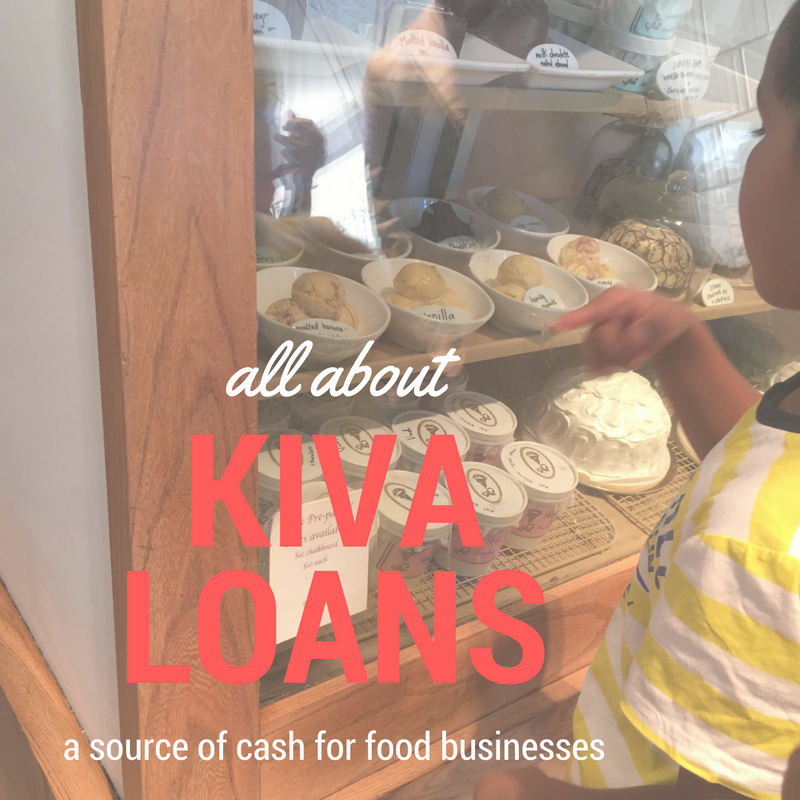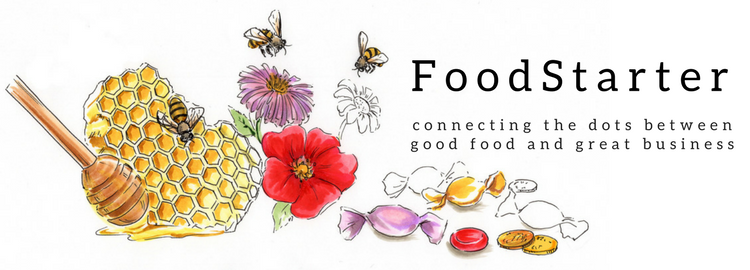 Kiva approached me about a post and, honestly, I was interested to hear details about the people who fund Kiva loans by individual folks, which are re-paid to the lender, and how food entrepreneurs choose this route for raising funds vs asking for donations ala Kickstarter. Hope you find it useful! -Susie
Kiva approached me about a post and, honestly, I was interested to hear details about the people who fund Kiva loans by individual folks, which are re-paid to the lender, and how food entrepreneurs choose this route for raising funds vs asking for donations ala Kickstarter. Hope you find it useful! -Susie
With nearly 3 million business loan applications rejected in the US every year, entrepreneurs need an organization that can provide financing when it seems like nobody else will.
Kiva is a nonprofit dedicated to economic empowerment; it offers 0% interest loans up to $10,000 to entrepreneurs in the US, crowdfunded through Kiva’s community of 1.5 million lenders around the world. Many of these lenders lend locally and become entrepreneurs’ new customers, brand ambassadors and fans.
Kiva is able to offer 0% interest loans because its lenders care first and foremost about supporting local small-businesses. They are not looking to make a profit on their loans, and instead want to give entrepreneurs the opportunity to develop their own businesses.
How lending works: Through Kiva, lenders are able to choose which borrowers they want to lend to directly, and once the loan is repaid, lenders simply re-lend their funds to other entrepreneurs.
Food entrepreneurs have found Kiva as a good source of capital for their young and growing businesses.
Kiva has helped over 1,000 food entrepreneurs raise $6.3 million to date; food entrepreneurs have a 97% success rate when publicly fundraising on Kiva.
Example: Rachel and Arthur, food entrepreneurs and Kiva borrowers
Arthur and Rachel co-founded Drums & Crumbs, a San Francisco Bay Area catering company and food truck. When the build-out of their food truck took longer than expected and ate away their savings, Arthur and Rachel raised $5,000 on Kiva to cover working capital and expenses for their first six months of operation.
Helping purchase a food truck is just one way food entrepreneurs have leveraged Kiva’s crowd; other use-cases have included working capital, purchasing equipment needed to open a new location, commercial kitchen rental and expanding sales efforts, as well as helping to open a farm-to-table café.
What to know about raising funds with a Kiva loan
First off, know if your project or company fits with these two success factors:
- Successful loan requests tend to have a compelling story: their applications explain not only what the business is, but also why the entrepreneur started the business.
- Have a clear business purpose for the loan (e.g. working capital, equipment etc.). Lenders want evidence that the entrepreneur has a business plan and a specific funding need, which the loan will help plug.
Yup? Awesome. The next thing to know, in short, is this:
- Kiva approves loan applications based on character, not credit data.
- Paying back a Kiva loan builds credibility for future loans.
- Kiva has high fundraising success rates.
- Kiva’s community of 1.5 million lenders is very active and engaged.
- Kiva’s loans are always at 0% interest.
In long…
1) Kiva approves loan applications based on character, not credit data
Small business owners are having an increasingly tough time gaining access to capital, as many lenders are risk-averse and evaluate “creditworthiness” based on a narrow set of financial criteria (e.g. credit reports, bank statements, cash flows and collateral). These requirements often disadvantage significant portions of the population. For example, on average, women start their businesses with half as much capital as men, and minority-owned businesses are 3x more likely to get rejected for a small business loan.
By contrast, Kiva determines small business owners’ creditworthiness primarily through “social underwriting”. This system works by having members of the borrower’s community vouch for the credibility of the borrower directly. They do this by investing at least $25 in the borrower’s business. This way, Kiva loans are available to good borrowers, who are otherwise excluded from (or charged high rates by) other financial institutions.
2) Paying back a Kiva loan builds credibility for future loans
In addition to providing immediate capital, Kiva can also open doors to more conventional lending sources. Many entrepreneurs feel trapped in a credit ‘catch-22’: they are excluded from receiving credit as their credit score is low, but are therefore unable to prove that they have the ability to repay on time! To help overcome this problem, Kiva reports loan repayments to Experian, which enables borrowers to build up their business credit score.
When their business is ready for another (potentially larger) loan, entrepreneurs can approach traditional channels equipped with a better credit score, improving their chances to receiving a bank loan.
3) Kiva has high fundraising success rates
The majority of crowdfunding campaigns on sites like Kickstarter and Indiegogo fail. On Kiva, however, 90% of campaigns that made it onto Kiva’s public website have reached their goal; the valuable time and effort you put in to secure funding is more likely to pay off!
4) Kiva’s community of 1.5 million lenders is very active and engaged
Borrowers on other crowdfunding sites typically raise 80% of the loans from their own social networks, which takes a lot of time and effort. By contrast, Kiva allows you to promote your business to its community of lenders, which typically funds 70-90% of a Kiva loan.
Additionally, Kiva is not just a resource for raising capital, but it also enables you to increase your social network to include lenders who take an interest in your business. Through Kiva, many borrowers find mentors, advisors and even customers!
5) Kiva’s loans are always at 0% interest
Many lenders charge small-scale entrepreneurs rates of 10%, 20% and even 30%! These rates can go even higher for ‘risky’ businesses. As a non-profit, Kiva doesn’t charge any interest or fees on its loans; borrowers need only pay back what they borrowed. While almost all lenders charge interest, Kiva has shown that this model works by lending $14.5 million to U.S. entrepreneurs over the past five years.
If you’re interested in learning more about Kiva or applying for a loan, visit borrow.kiva.org or email borrowers@kiva.org to take your first step in joining thousands of other entrepreneurs who have grown their businesses with Kiva.
(And keep me posted how your fundraising goes! -Susie)







